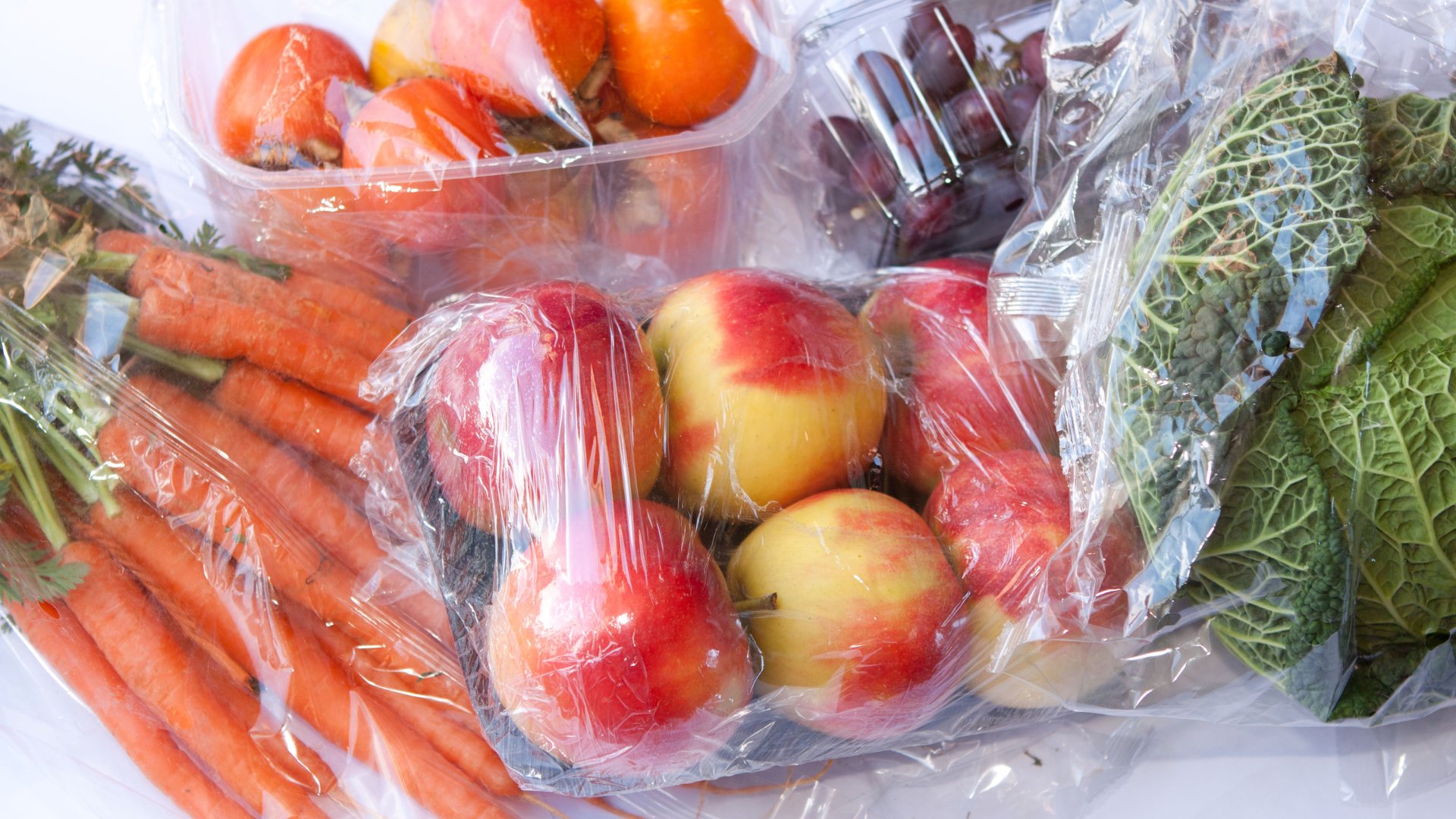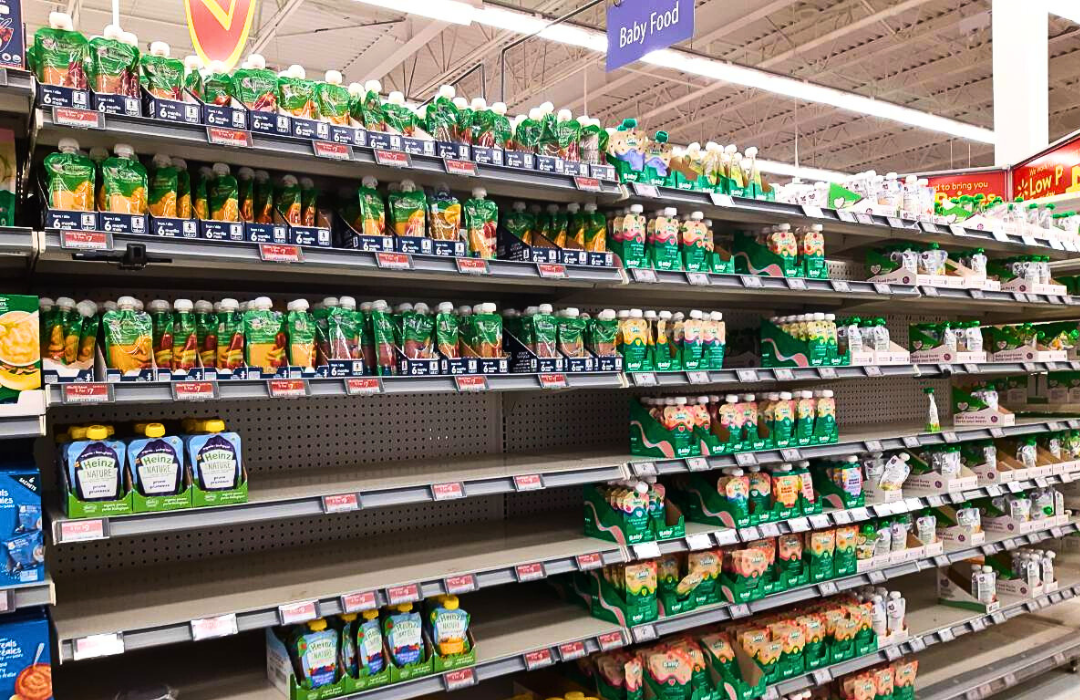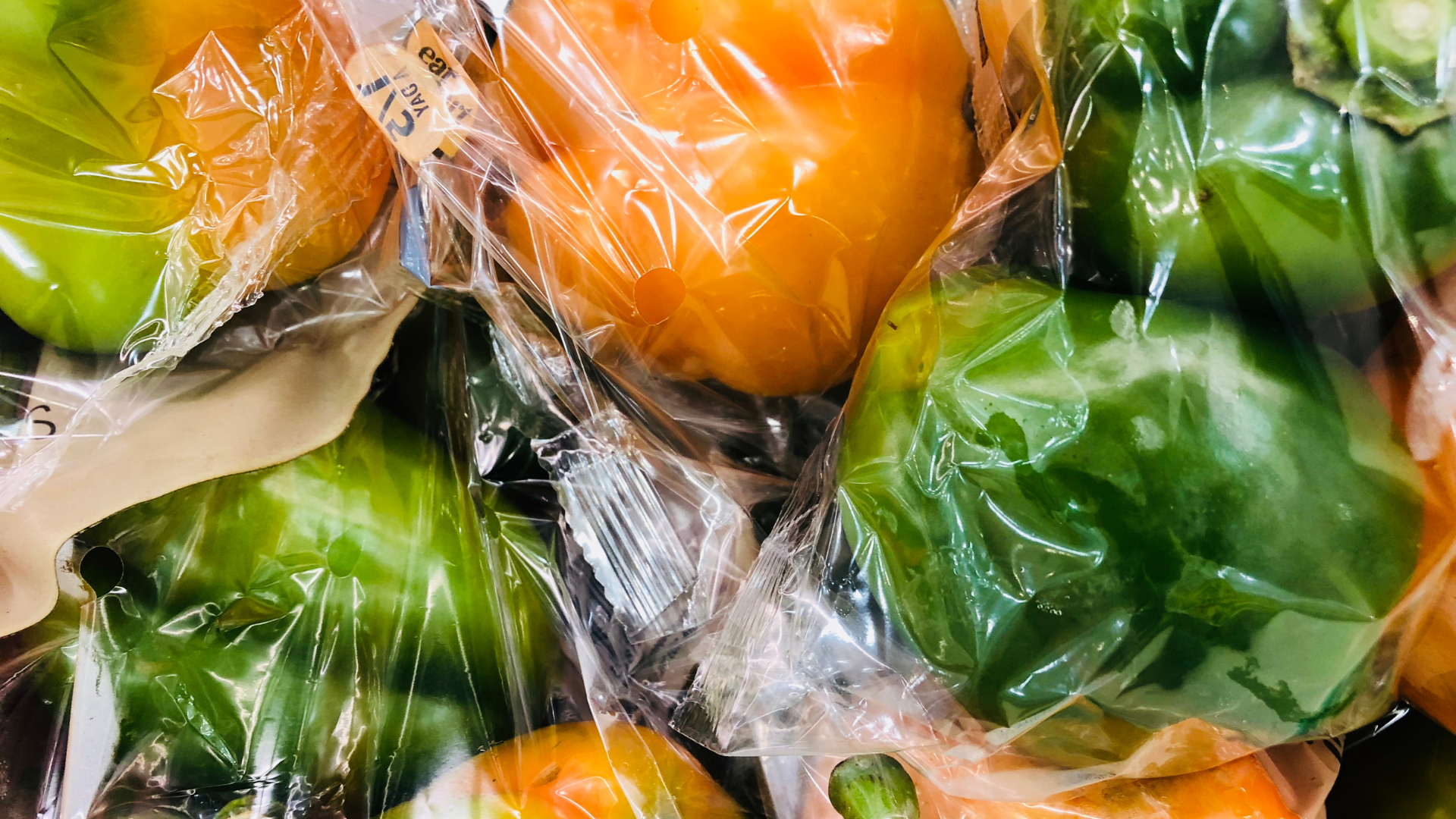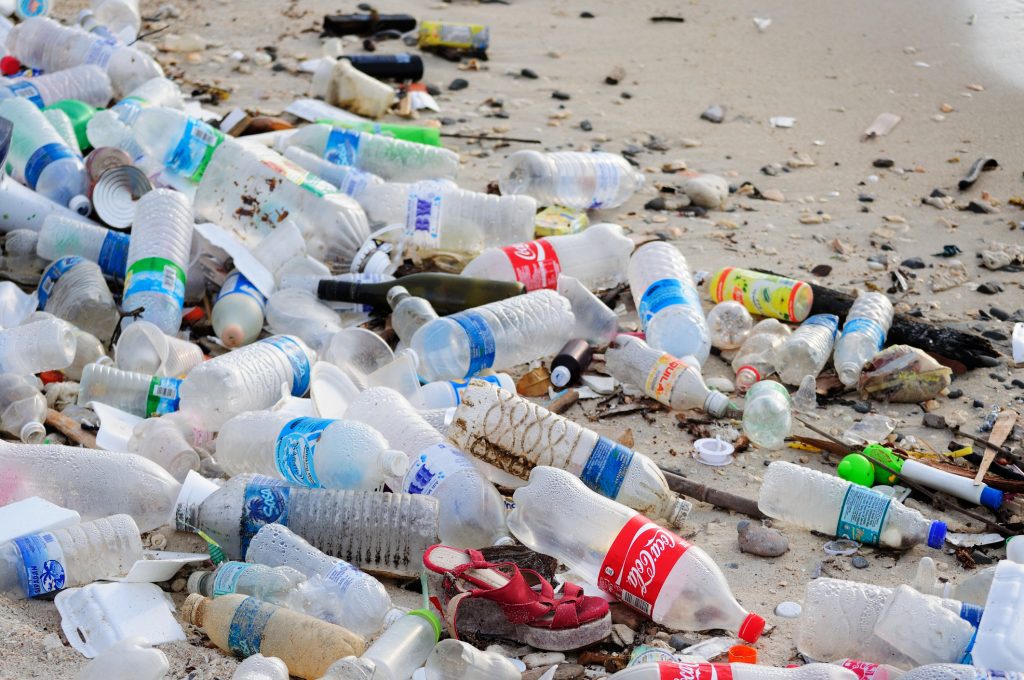You’ve arrived at stop number four on the journey of plastics in Canada. At our last stop, we took a tour of Chemical Valley in Sarnia, Ontario, where oil is refined and manufactured into the plastic products we use everyday. Today, let’s take a stroll down your local grocery store aisle where many of those plastic products are wrapped around your food.


This Plastic Free July, we’re sharing the full story—and impacts—of plastics in Canada. Throughout the month of July, we’re taking you on a step-by-step journey that exposes the true cost of the plastic lifecycle. Some 6 million tonnes of plastic is put on the market every year in Canada, and more than one-third of that is packaging, including all the films, pouches, bags and trays wrapped around the food we buy in the grocery store.
What is single-use plastic?
Single-use plastic is a plastic item that is designed to be used once and then thrown away. We’re made to think that single-use plastic is clean and sanitary – the ideal way to wrap food or spoons to protect them from germs and dirt before we put them in our mouths. But the reality is that plastics are made from a chemical soup whose base ingredients are almost always crude oil and fossil gas, making them a dirty business at every phase of their existence—including when we use them.
Why are single-use plastics bad?
Single-use plastics are problematic because they cause harm at every phase of their life. As we explained in the earlier blogs in this series, the first phase of plastics is the extraction of oil and gas from the ground, after which it is transported to refineries that produce chemicals (including carcinogenic ones) that are then turned into the products we use every day. Each of these phases generates pollution that affects the people and ecosystems nearby. But the everyday use of plastic is a phase no one can escape. Single-use plastics are all but unavoidable in our daily lives, and so are their harmful impacts.
Single-use plastic packaging has taken over the grocery store
Take the grocery store. We recently did a survey of plastic packaging in the major grocery stores across Canada. We specifically looked at shelves where you would expect to find the healthiest foods: the produce section and the baby aisle.
We found a full 71 per cent of the items in the produce section were wrapped in plastic, a stunning number considering that fruits and vegetables mostly come in their own natural wrapping. Bananas don’t need a bag, coconuts don’t need shrinkwrap and onions can do without the mesh.
But even more concerning are the aisles of food marketed for babies and toddlers. More than three-quarters – 76 per cent! – of these products now come in plastic, including flexible pouches that often have a rigid plastic nozzle that children can use to drink or eat directly from the package.


Plastic packaging is bad for our health
The federal government has already confirmed that plastic packaging can expose us to chemicals that affect how our bodies function, including brain development, reproduction and heart health. Plastic packaging is also a source of microplastic exposure – tiny plastic particles that separate from the package and can end up in our food and beverages – and ultimately our bodies. Because of their size and stage of development, babies and young children are particularly vulnerable to these exposures.
And yet grocery stores and food manufacturers just keep piling on the plastic, including the recent trend of flexible layered packaging – think of the snack or frozen vegetable pouch that is also filling the baby food aisle. It’s not clear what chemicals are in all this packaging, what is likely to leach into our foods and what the full health impacts are. So how could it possibly be ok to feed it to babies and toddlers?
How can we reduce single-use plastic packaging?
It’s time for grocers to ditch the packaging. They must start immediately by unwrapping almost all fruits and vegetables and shifting away from single-use plastic in the baby food aisle.
Getting rid of plastic pollution and waste means shifting away from systems – including food supply chains – that rely on single-use plastics. The less plastic we make and use, the less we will harm people and the environment. It’s that simple.









